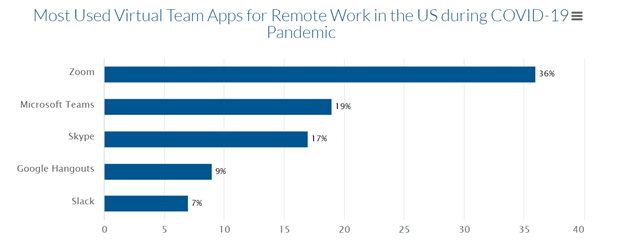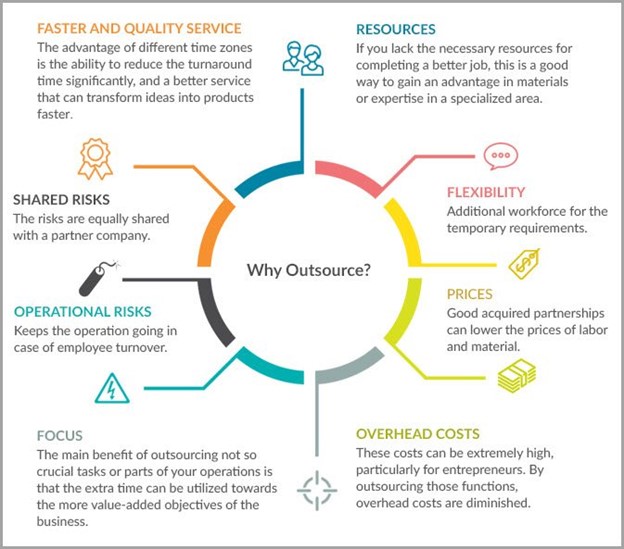You have plunged into starting a solo business venture, congratulations! Being a solopreneur is a great experience for inspired individuals, but failing to manage your team can turn into a disaster. When everything starts expanding, you can easily miss out on important things—what pulled you to your passion company in the first place, and at the worst, your tools of escape can turn out to be your shackles.
Without proper strategies in place, running a business remotely can feel like holding a tiger by the tail. If you ever feel overwhelmed by a load of your responsibilities or your long to-do list, here are a few ways to stay focused on the big picture and manage your business team effectively like a pro!
As a Solopreneur, you’re the frontrunner in charge of a team. This role comes with a lot of responsibilities, including motivating, guiding, and equipping your team with the essential tools and resources to accomplish everyday tasks quickly.
The rapid shift towards remote working has generated new challenges for organizations. Organizations across the world are trying out creative solutions and approaches.
Building a strong, motivated team to help your company grow and climb the ladder is always challenging, and adding ‘remote’ to the equation of your business can make it an even more tall order.
With the help of emerging and new technologies, cloud-based SaaS software and quicker Internet connections have made the trend and comfort of remote working grow even rapidly among startups and avantgarde companies.
Moreover, the COVID-19 pandemic has made remote working not only our new reality but is the way advancing from now on to ride the remote working wave.
Remote Employee Behaviour and Productivity
CoSo Cloud survey shows—
- When working from home, 77% of remote employees are more productive.
- 23% of remote employees work longer than they would in the office.
- 53% of remote employees are less probable to take a break than they would when working on-site.
The Biggest Challenges of Managing a Remote Business Team
As it is becoming increasingly common for employees to work remotely, the dynamics poses many challenges for efficient remote team management. The common challenges include—
- Considering everyone’s time
- Fixing schedules
- Hiring the right resources
- Ignoring accountability program
- Inept tracking employee performance
- Lack of unity and management within the team
- Making everyone feel a true part of the team
- No well-defined roles and tasks
- Not having the appropriate communication tool
Establish a Strong Company Culture
Fostering a culture within a team that isn’t face-to-face can be extremely difficult. Creating an environment of optimistic behavior, and continuing to evolve as a positive company culture with a remote business team can be very beneficial.
Admittedly, it can be difficult to build a culture within a team that isn’t face-to-face. Still, it’s not impossible.
Share Your Values, Mission, and Vision
The mission and vision of a company serve as a compass for all employees. Your team should know your mission and vision so that it can inspire them in every business step they take.
If they don’t know the company’s aim and don’t engage themselves in attaining the company’s bottom line, they will lack enthusiasm.
Make Them Feel the Office Atmosphere
While working remotely, everyone on the team still should have the social mindset to treat each other the way they would do while working in the same office. Encourage your remote team to know each other not just as a colleague but as a person.
Catch on what are your employees’ fears, what makes them tick, and how to motivate them. Have one-on-one meetings with them to understand their traits, and get a clearer picture of how to make your company processes match their requirements.
Create team rituals because humans have used rituals to bind tribes for as long as they have been. That’s why most high-performing teams engage in common rituals regularly- they improve cooperation, confidence, and a feeling of connection.
Hire the Right People
Not everyone is fit for remote work. Getting the right people in your team is very important. It is a great idea to define your company’s perspective on remote work. It will let you and your potential employees know what’s the culture in the company and what to expect. For example—
- Is your organization a good place to work at?
- Do team members work in different time zones?
- What are the ways your teams communicate and collaborate virtually?
- How much independence is permitted?
Source: SHRM
It is crucial to be clear about the vision of your company and what is required from them, so the employees know what to expect. Remember, it is all about nurturing a creative, productive, and positive place that supports employees in their careers.
Define and Streamline Work Systems
Different people approach tasks in different ways. Defining standards can help cut down on the time it takes to get the desired outcome. By establishing standards and setting consistent work methods, the team will have fewer queries and will have a better idea of how long specific jobs should take.
These work methods must be both streamlined and adapted to allow optimal efficiency and the flexibility to do the task better of one’s capabilities.
Be Open, Approachable, and Connected
Communication is key in any relationship. And being a solopreneur, it’s your responsibility to put the focus here. Rather than thinking of it as a challenge, take it as an opportunity to make your team feel encouraged, supported, and confident in accomplishing their tasks.
Slack- a prominent chat app used by businesses all over the world, is a brilliant remote communication tool. Chats provide easy and quick communication among team members, as well as checking in with employees to interact and collaborate, as well as encourage conversation.
If practical, schedule meetings on specific days and times so that your team knows when they have to be available. Some options include meeting at the start and end of every week to touch base on what’s expected and to analyze what’s finished or meeting every week to discuss what was completed the previous week and what’s on the schedule for the coming weeks.

Source: Finances Online
People can see their teammates by using Zoom. You can record the meetings and share links later with the people who can’t attend the Zoom meeting. This face-to-face approach promotes teamwork, collaboration and sociability, both of which are beneficial to business productivity.
Establish a Video-First Culture
Video conferencing is much more than merely a meeting tool. Employees are not only more focused, motivated, and engaged during meetings when video communication is employed, but they also profit from nonverbal cues and mannerisms to establish a great, more trusting relationship with their remote colleagues and customers.
In contrast to audio-only conference calls, “video-first” is an effective organizational approach that promotes video conferencing tools.
Video communication hones the quality of communication significantly and offers immense business benefits and leads to a better connected, motivated, and more productive organization. The Forbes Insights research surveyed workplace trends and the results were surprising—
- Video builds higher trust and credibility (93% believed)
- Video communication has a significant impact on overall performance (95% said)
- Video improves the engagement, focus, and efficiency of remote employees (93% agreed)
Employ Right Tools for Better Productivity
Working remotely poses a unique set of challenges, which demands using a unique set of tools to handle them. Handling remote teams has a unique set of challenges, ranging from work accessibility and cross-time zone communication to fostering a sense of belonging. However, as the remote work paradigm grows in popularity, being a solopreneur, you have to be ready for the challenges of remote workforces.
However, there are ample tools that can help in streamlining your business operations.
It can be quite tricky and nerve-racking to manage the engagement and performance of someone who has never met in person. Besides cultural adjustments, it essentially needs a highly special toolkit. Here are a few tools that can help you manage remote collaboration and make sure everyone feels like an equal, valued member of a team.
- Trello – for workload, project, and task prioritization
- Zoom – for synchronous face-to-face conversation
- Slack – for real-time communication
- Timely – for KPI tracking, invoicing accurately, and managing resources
- Todoist – for tracking to-dos
- Microsoft Teams– for keeping meetings, files, conversations, and apps linked together
- 1Password– for storing passwords for shared logins and manage user access
- Google Drive – for document collaboration and cloud storage
- HelloSign – for managing e-signatures
- Officevibe – for employee satisfaction surveys
- TimeZone.io– for managing different time zones
A Working Process With Minimal Distractions
According to CoSo Cloud, 77% of employees agreed that they are more productive and focused when working from home.
It is important to have a dedicated flow and process of work through which all the incoming requests (messages) can be prioritized, assigned, and tracked to the finishing point. It’s common and quite obvious for employees to become stressed and overwhelmed when their emails begin to overflow with notifications, emails, and messages with no defined priority of work. It’s also quite common for a remote leader to overlook the early signs of work stress and burnout in their team.
Simplifying all tasks and properly prioritizing them allows employees to stay ahead of everything in a timely and orderly manner, assuring that nothing escapes through the lines.
Outsource Wherever Feasible
Outsourcing has been a great solution for many businesses— it makes a significant impact on a company’s productivity, growth, and bottom lines. All you need is to learn—
- What you can outsource
- Where to outsource
- How to efficiently manage business and team online
- Available tools for outsourcing and managing

To understand how outsourcing can benefit you, let’s consider an example.
Say, you run an e-commerce business remotely. You can outsource the order fulfillment process to a reliable logistics provider to streamline your eCommerce fulfillment process. It will help you free up your valuable time so that you can focus on growing your business. Outsourcing certain tasks are crucial.
Schedule Regular Meetings With Employees
When it comes to remote management, there’s no one-size-fits-all for how often you should reach out to team members. It is important to create a routine by scheduling briefings on the same weekday at the same time. This will put the team at ease and lower stress because they know when they have to be available. As discussed above, video calls are one of the most effective ways to improve productivity as they reconstruct the routine office feeling. Regular meetings through video calls either conference or one-on-one keeps remote employees engaged and motivated.
Scheduling one-to-one calls regularly— whether daily, once a week or biweekly can help you to–
- Assess the overall performance of the employee
- Respond to questions related to the employee
- Talk over professional development of employees
- Work with the team members to find out and remove glitches
However, depending on the employees and their job responsibilities, less or more regular communication may be needed.
Wrapping Up
With the market and businesses going global, it’s the right time your team should too. And when you have to manage your business team remotely, ensure you know their pulses. Following the right approaches on how to efficiently manage remote employees, you can eventually create a robust business with your remote team. Putting some extra effort, you can do wonders for your business by remote working and drive your business team towards success.
Good luck with your remote working culture!
Author Bio
Tim Robinson is Digital Marketing Manager at PACK & SEND, a 25+ years old and respected brand in ecommerce, logistics, and freight delivery solutions. Tim has 20 years of combined experience in sales and marketing. Logistics, D2C, franchising, business planning, and operations management are his core expertise. Connect with Tim on LinkedIn.
